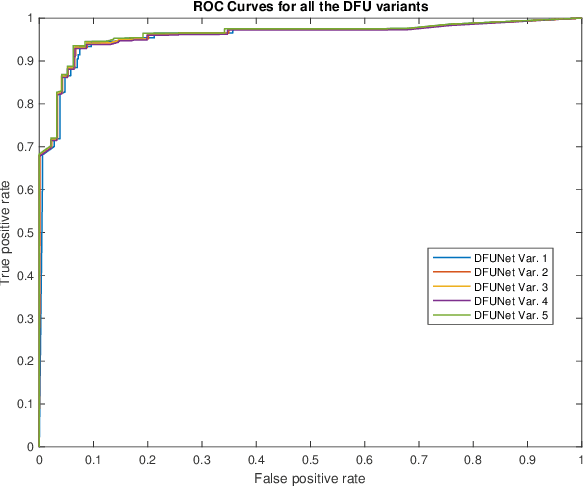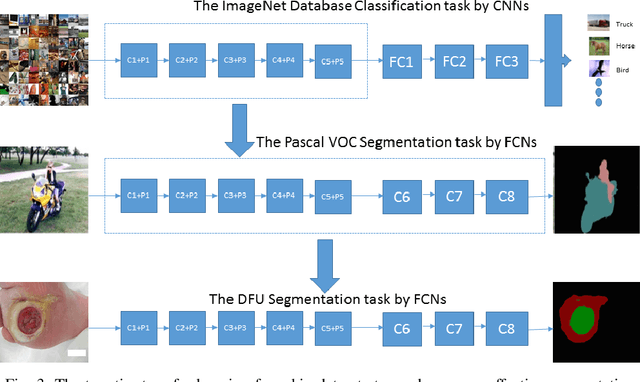Jennifer Spragg
DFUNet: Convolutional Neural Networks for Diabetic Foot Ulcer Classification
Dec 10, 2017



Abstract:Globally, in 2016, one out of eleven adults suffered from Diabetes Mellitus. Diabetic Foot Ulcers (DFU) are a major complication of this disease, which if not managed properly can lead to amputation. Current clinical approaches to DFU treatment rely on patient and clinician vigilance, which has significant limitations such as the high cost involved in the diagnosis, treatment and lengthy care of the DFU. We collected an extensive dataset of foot images, which contain DFU from different patients. In this paper, we have proposed the use of traditional computer vision features for detecting foot ulcers among diabetic patients, which represent a cost-effective, remote and convenient healthcare solution. Furthermore, we used Convolutional Neural Networks (CNNs) for the first time in DFU classification. We have proposed a novel convolutional neural network architecture, DFUNet, with better feature extraction to identify the feature differences between healthy skin and the DFU. Using 10-fold cross-validation, DFUNet achieved an AUC score of 0.962. This outperformed both the machine learning and deep learning classifiers we have tested. Here we present the development of a novel and highly sensitive DFUNet for objectively detecting the presence of DFUs. This novel approach has the potential to deliver a paradigm shift in diabetic foot care.
Fully Convolutional Networks for Diabetic Foot Ulcer Segmentation
Aug 06, 2017



Abstract:Diabetic Foot Ulcer (DFU) is a major complication of Diabetes, which if not managed properly can lead to amputation. DFU can appear anywhere on the foot and can vary in size, colour, and contrast depending on various pathologies. Current clinical approaches to DFU treatment rely on patients and clinician vigilance, which has significant limitations such as the high cost involved in the diagnosis, treatment and lengthy care of the DFU. We introduce a dataset of 705 foot images. We provide the ground truth of ulcer region and the surrounding skin that is an important indicator for clinicians to assess the progress of ulcer. Then, we propose a two-tier transfer learning from bigger datasets to train the Fully Convolutional Networks (FCNs) to automatically segment the ulcer and surrounding skin. Using 5-fold cross-validation, the proposed two-tier transfer learning FCN Models achieve a Dice Similarity Coefficient of 0.794 ($\pm$0.104) for ulcer region, 0.851 ($\pm$0.148) for surrounding skin region, and 0.899 ($\pm$0.072) for the combination of both regions. This demonstrates the potential of FCNs in DFU segmentation, which can be further improved with a larger dataset.
 Add to Chrome
Add to Chrome Add to Firefox
Add to Firefox Add to Edge
Add to Edge